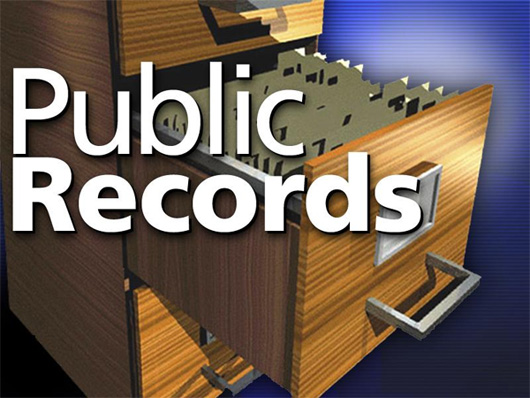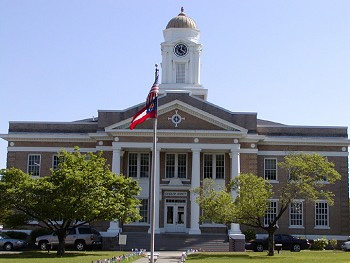Public Records & Square Footage
What Are Public Records?
Per Law.com: public records are defined as; any information, minutes, files, accounts or other records, which a governmental body is required to maintain, and which must be accessible to scrutiny by the public. This includes the files of most legal actions. For example: a recorded deed to show transfer of title or a criminal judgment are both public records.
Per Wikipedia.org: public records refers to information that has been filed or recorded by local, state, federal, or other government agencies, such as corporate and property records. Most essential public records are maintained by the government and many are accessible to the public, either free-of-charge or for an administrative fee. Certain unscrupulous companies, who sell software with a promise of unlimited access to public records, generally provide nothing more than just basic information on how to access already available and generally free public Websites. The institution of public records was created to make the government accountable for its actions and to make operation of the government transparent.

Per Answers.com: public records are defined as; in real estate, land transaction records kept at the county courthouse. Documents that are evidence of real estate transactions should be taken to the county courthouse to be officially entered in the public record. Recording gives Constructive Notice of a document’s existence. Access to public records in the U.S. is guided by the Freedom of Information Act (FOIA). Each state has its own version of FOIA.Today, if you check how many entries are listed in Google® or Yahoo® (using only public records, real estate?), each will deliver well over seven million entries. Many sites, such as “NETRonline.com” or (Real Estate Information and Public Records Research) provide (free) on-line addresses for every county tax department, nationwide.
Public records are just what the name implies; legal records available to the public. All real estate transactions (deed transfers) are available for public display. Most deeds are recorded in county records; providing the date of sale, sales price, buyer and seller’s names, legal description, and more. The property details and any property transaction details are available to any person and/or company with an interest. This information may be used for personal reasons or may be gathered, organized, and sold for profit.
All information displayed in public records is based on verifiable facts; all except one. The total “Square Footage” provided on county tax cards is created through a “mass appraisal” system. A mass appraisal is technically defined as: “an assessment of many properties using a statistical approach, conducted by a government agency.”
A county tax assessor is the official responsible for “appraising” all property within a specific assessment district. The job generally covers an enormous quantity of properties, which must be inspected and assessed within a short time frame. The assessor’s job includes valuing all taxable property to determine the fair share of the levy each parcel will bear. The “assessed value” is the dollar amount assigned to taxable real and personal property, specifically for the purpose of taxation. The property assessment should bear a direct relationship to the amount that a typical purchaser would pay for the property under ordinary circumstances. Fair market value is the amount a property should sell for in an arms-length transaction, on the open market, between a willing seller (not obligated to sell the property) and a willing buyer (not obligated to purchase it). Taxes may be assessed based on the full or a pre-determined percentage of fair market value. Mass appraisal is defined as: the process of valuing a group of properties as of a specified date, using standard methodology, employing common data, and allowing for statistical testing.
Keeping records up to date is an important part of the assessor’s job. Any changes in property values may influence revenues. Maintenance of assessment records may include the listing and physical inspection of new dwellings, and any additions to existing dwellings, both based on permit applications. All real property should be re-visited and re-inspected within a specified time period (generally 2-4 years) depending on the size of the county and its location. Unless a permit has been issued, or there is some obvious red flag that stands out from the street, many re-inspections consist of (what we like to call) windshield appraisals. A drive-by inspection with minimum notations, unless there has been a major change to the dwelling’s exterior appearance, size, or condition. While most places require re-inspections within a reasonable time period, there are tax records which reflect the last date of inspection as far back as 1980. The requirements for inspections vary greatly depending on the size of the county, state, land uses and patterns of urbanization. Trying to establish one inspection format is just not practical in most counties, due to areas ranging from vast forest land to huge metropolitan areas with a wide variety of housing types and densities. Per the US Census Bureau: as of July 1, 2007 there were approximately 128 million housing units in the United States mainland.
(F.Y.I. Apx. 94% of those homes have telephone service available.)
All public records are based on verifiable facts; except one. And that one helps to determine the value of most people’s largest single lifetime investment. If it’s your home, don’t trust square footage to the public records system.
After studying the public records system and square footage information for the last eight years, it has become evident that the real estate industry has reached a turning point. The have been on a downhill spiral ever since the late nineties, when the use of online square footage details rapidly overtook real estate offices across the country. Trying to sort through all the examples of square footage mistakes and their impact on home values become quite difficult. There are numerous examples in every county and every state. Large cities, small rural towns, all were equal opportunity offenders. Not seen as mistakes at all from the local assessor’s viewpoint, the square footage information reported in public records was never designed and/or intended to be used outside the tax department.
What do we really know about the information provided by the local tax department? Just the name “public records” emulates authority. We rarely question any information listed by the government. Most data listed in public records is fact based. A recorded deed is a verifiable fact. However, unlike all other public records, a dwelling’s size is created as an estimate of size, for assessment purposes only. It is the only item on a tax card, which is not based on a verifiable fact. Different counties and states all have their own interpretations of what is included in the “size” of a dwelling. “Square Footage” means different things in different locations. Some states have a central system, but many states allow each county to make the decision about the manner in which they collect and report square footage details.
Public records are a wonderful tool for the real estate and appraisal industries. However, the county assessor’s office is not responsible for the real estate industry’s future. Public records provide many important facts. Items such as owners’ names, legal descriptions, annual taxes, year built, deed book/page, and information on the last transfer of the property. All this information is based on facts of data.
Do you really know what the Mass Appraisal process means? Do you understand the reasons why we have public records in the first place. What’s the real purpose of having homes measured? Most people don’t know, don’t care. But, think about it just a minute. In the real estate industry, it’s a powerful “Source” of information and everybody uses it. Most practitioners depend on it, no questions asked. If the whole truth was known, it may shake up the very foundation of our real estate valuation system. So, we quietly continue to use the numbers reported by the local tax department.
Partly due to the fear of the unknown and partly due to fear of liability. Square footage is a volatile subject to bring out into the open. It could turn into a bee-hive of consumer complaints. However, it also may be an issue the real estate industry will have to face in the near future. The question will be, if it is from an offensive viewpoint of a defensive one… The questions will continue to be asked. We are the real estate experts! If we can’t answer the questions, who can? Ask the appraisal industry what can happen when the government decides that they know best!
Public records include a specific square footage total, which may be listed in a wide assortment of names and descriptions. This information was not created or intended for use outside of the tax department. Tax department records are created to determine the general size of a dwelling, to be used for tax assessment purposes only. Public Records were never designed and/or intended to report an exact square footage total to be used in detailed comparisons.
“Mass Appraisal” companies come in and perform the measurement services for the local county government and often, the local tax staff is unsure of exactly how those measurements were calculated. There are no national requirements for assessors to measure square footage, or to categorize finished space or otherwise. Knowing what is included within the totals listed in public records can often be misleading. Tax departments provide this information without warranty of any kind and are not responsible for any errors or omissions. The main goal of companies that provide mass appraisal services is often how many homes get done in a day, not how well each one is done.
While the majority of county assessor offices work diligently to provide accurate information, the mass appraisal system was not designed (and does not allow sufficient time, access, or training) for the creation of specific, detailed square footage totals. Measuring houses in great detail was never part of the original design of the public records system. That job belonged to the real estate professionals.
In defense of the tax assessor’s office, they have no interest in the real estate information system. They have no idea the real estate and appraisal industries have become so dependent on their information, created especially for their use. In most cases, the assessor never enters the dwelling and may only visit a particular dwelling once every eight years (or less). This information was never meant to be used as a detailed source of square footage details. The real estate industry is simply taking the assessor’s information and trying to force it to work in the real estate comparison and valuation processes.
Basing a value or making a comparison of dwellings based on public records may be as reliable as the flip of a coin. There is also no one accepted standard of how tax departments report square footage data. Basement square footage may be counted (and taxed) at the same rate as all other space, finished or not. Even the names of square footage vary across the country. (i.e. Est Tl Living Area; Heated Area; Heated Sq Ft; HTD AREA; Base S/F; Base Area (sf); Fin. Area (sf); Main Fin Area; Heated Area (S/F); GFLA; etc…) It can vary from county to county and state to state. If an appraiser works in several counties, it’s often difficult to know what you are comparing.
These are all terms used to express “total square footage” in different counties across the country.
- Est Tl Living Area
- Heated Area
- Heated Sq Ft
- HTD AREA
- Base S/F
- Base Area (sf) Fin. Area (sf)
- Main Fin Area
- Heated Area (S/F)
- TlArea
- GFLA
- SF of ground area (SFGA)
- (sf) Fin
Square Footage Names Listed in Public Records
The real estate industry continues to value properties (determining listing and offer prices) based on information which we know is incorrect. Is there any wonder we have a real estate crisis?
The tax assessor is mostly unaware of what great importance their information is to the real estate industry. When you ask a tax professional about agents and appraisers using their square footage information, you will likely hear something similar to: “I hope those guys don’t figure out any values based on that stuff” or “if anybody uses that and thinks it’s right, they’re in big trouble.” Most people within the tax department know the information is not reliable for detailed comparison; it’s not intended to be. They can’t imagine a profession, which knows this information is an estimate of size only, would ever intentionally use this information.


In order for the real estate system to function properly, determining square footage should be part of a professional agent’s duties. The public hires a real estate professional to represent their best interests. If you tell a property owner they have a 2,000 square foot home and price it accordingly, only to find out later the home actually has 2,350 square feet, who is responsible for this information? In our current way of thinking, no one wants to be responsible. We want the paycheck that comes with responsibility, but not the work and liability associated with the risk. The tax department certainly has no liability in providing this information. It is public knowledge they do not enter the property and any size measurements are estimates only. Any professional should know these public records are not dependable. Regardless of the circumstances, any square footage total advertised or reported by an agent, is the agent’s responsibility.

